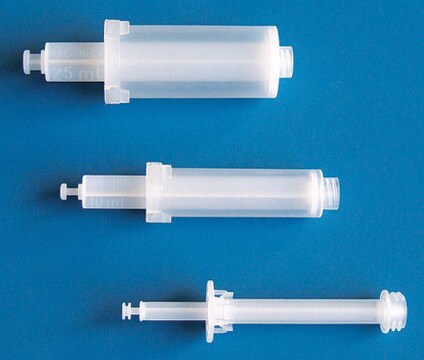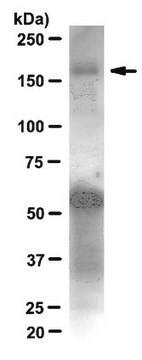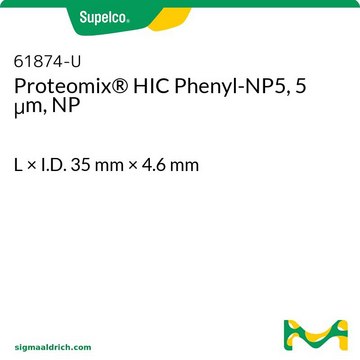05-184-AF488
Przeciwciało anty-Src, klon GD11, koniugat Alexa ™ 488
clone GD11, from mouse, ALEXA FLUOR™ 488
Synonim(y):
Kinaza tyrozynowo-białkowa transformująca białko Src, pp60v-src, p60-Src, v-Src, protoonkogen kinaza tyrozynowo-białkowa Src, p60-Src, pp60c-src, protoonkogen c-Src
About This Item
Polecane produkty
pochodzenie biologiczne
mouse
Poziom jakości
białko sprzężone
ALEXA FLUOR™ 488
forma przeciwciała
purified immunoglobulin
rodzaj przeciwciała
primary antibodies
klon
GD11, monoclonal
reaktywność gatunkowa
rat, human, mink, mouse, avian
metody
immunocytochemistry: suitable
izotyp
IgG1
numer dostępu UniProt
Warunki transportu
wet ice
docelowa modyfikacja potranslacyjna
unmodified
informacje o genach
human ... SRC(6714)
Opis ogólny
Gen V-SRC wirusa mięsaka Rousa (RSV) jest pierwszym odkrytym onkogenem retrowirusowym. V-SRC koduje kinazę tyrozynową v-Src, która przekształca zainfekowane komórki gospodarza w niekontrolowaną mitozę, zapewniając obfite komórki do świeżej infekcji. Nieonkogenny kurzy gen c-Src (komórkowy Src) strukturalnie związany z v-Src został odkryty później w 1979 roku przez J. Michaela Bishopa i Harolda E. Varmusa. Uważa się, że RSV pierwotnie przejął protoonkogen SRC kurczaka (Gene ID 396442; UniProt P00523) i włączył go do swojego genomu w zmutowanej formie konkogenu. c-Src zawiera sześć funkcjonalnych regionów, domenę Src homology 4 (SH4), unikalny region, domenę SH3, domenę SH2, domenę katalityczną i krótki ogon regulacyjny. W stanie nieaktywnym Src jest fosforylowany na Tyr527. pTyr527 oddziałuje z domeną SH2, co pomaga domenie SH3 oddziaływać z domeną łącznikową i w konsekwencji utrzymuje nieaktywną jednostkę ściśle związaną. Defosforylacja pTyr527 destabilizuje nieaktywną konformację, otwierając domeny SH3, SH2 i kinazę, prowadząc do autofosforylacji Tyr416 i aktywacji c-Src.
Specyficzność
Immunogen
Zastosowanie
Nieskoniugowane przeciwciało (nr kat. MAB1618) nadaje się również do zastosowań w Western blottingu, immunocytochemii, immunofluorescencji i immunoprecypitacji.
Struktura komórki
Onkoproteiny
Jakość
Immunocytochemistry Analysis: An 1:100 dilution of this antibody detected Src in HeLa cells.
Opis wartości docelowych
Postać fizyczna
Przechowywanie i stabilność
Inne uwagi
Informacje prawne
Oświadczenie o zrzeczeniu się odpowiedzialności
Nie możesz znaleźć właściwego produktu?
Wypróbuj nasz Narzędzie selektora produktów.
Kod klasy składowania
12 - Non Combustible Liquids
Klasa zagrożenia wodnego (WGK)
WGK 2
Temperatura zapłonu (°F)
Not applicable
Temperatura zapłonu (°C)
Not applicable
Certyfikaty analizy (CoA)
Poszukaj Certyfikaty analizy (CoA), wpisując numer partii/serii produktów. Numery serii i partii można znaleźć na etykiecie produktu po słowach „seria” lub „partia”.
Masz już ten produkt?
Dokumenty związane z niedawno zakupionymi produktami zostały zamieszczone w Bibliotece dokumentów.
Nasz zespół naukowców ma doświadczenie we wszystkich obszarach badań, w tym w naukach przyrodniczych, materiałoznawstwie, syntezie chemicznej, chromatografii, analityce i wielu innych dziedzinach.
Skontaktuj się z zespołem ds. pomocy technicznej








